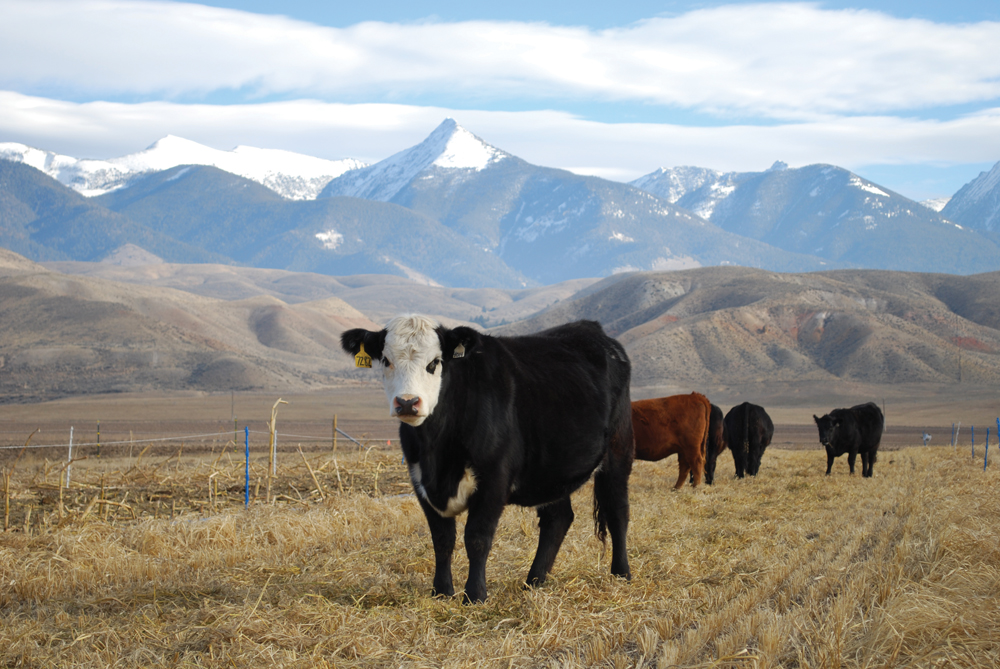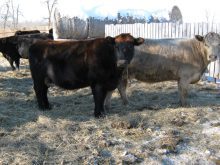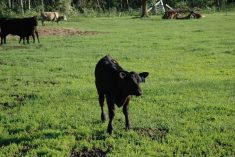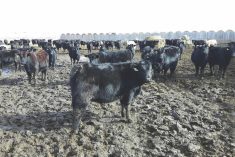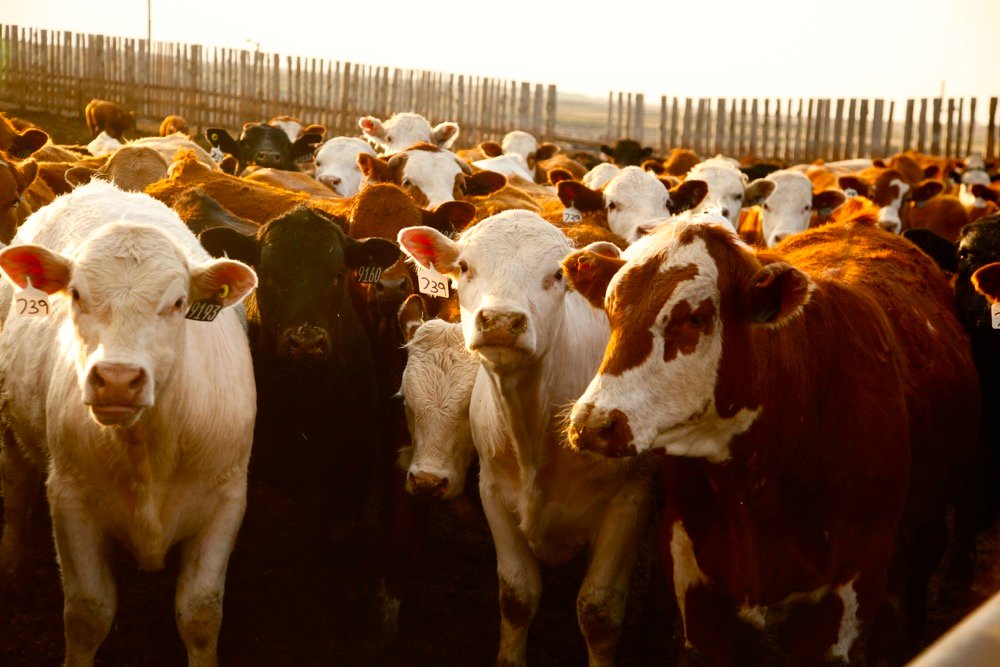Some ranchers hold calves over as yearlings, and some buy light calves in the spring to put on grass and gain weight. Some calves go into a confinement program and are fed a growing ration until they are ready to enter a finishing facility. Backgrounding covers a spectrum of situations that includes preconditioning before and after weaning.
The transition at weaning or when calves go from a grazing program into a feedyard should be be as stress free as possible.
Grant Lastiwka, a livestock and forage business specialist for Alberta Agriculture, says the noted U.S. livestock handling specialist Bud Williams showed how sickness in weaned calves could be practically eliminated with low-stress handling and by acclimating calves gently into their new situation.
Read Also

Harvest wraps up and fall work begins
At the Eppich famly ranch in western Saskatchewan, the fall harvest was successful with few breakdowns, cows and calves have been sorted and a new tractor has arrived
“The ability to transition calves and allow for some comfort, quieting them down, makes a huge difference,” says Lasktiwka. “I have always been surprised there’s been no research done to show the differences that having a mother cow or two in with those newly weaned calves can make.”
Ranchers are accustomed to the stress on calves when taken from their mothers, using traditional weaning (abrupt separation, and having the calf thrust into a new environment with new feed).
“We realize there is room for improvement,” says Lastiwka. “Ag Canada researcher Al Schafer at Lacombe showed how stress levels in cattle can rise dramatically. Some of the blood stress indicators (like cortisol) still are not back down to normal as much as two weeks after a stress event.
“We know that stress tends to increase risk for sickness. We also know any animal that gets sick has a challenge to be profitable. Even beyond that, there is likelihood the stressed animal won’t be a high-quality meat product.” The meat may be tough and not an ideal eating experience.
Weaning sets the stage
Every time producers handle animals, but especially at this weaning transition time, they are setting the stage for future performance and profitability — or lack of it. “With my own calves, I wean them myself because I want the end product to be as high quality as possible,” says Lastiwka. “If I can transition my calves from the mother to the feed, in a manner that allows for gain to continue (and no drop or slowdown in gain), this shows stress is well managed. The ability to wean calves and sell them two weeks later in a gaining condition is much better than the old days when we waited at least a month after weaning to get them recovered and gain back the pounds we lost.”
Low-stress weaning resolves this problem. “I start before weaning with the nose flaps (calves still with their mothers but unable to suckle), and then across the fence from their mothers. Producers who are backgrounding their own calves can do this, and find that these animals don’t get sick,” Lastiwka says.
Many feedlots now put incoming calves onto a grass hay forage ration (that they are more familiar with) rather than an abrupt change to silage and concentrates. The idea is to keep some familiarity and allow for an easy transition within their comfort zone.
“When Bud Williams worked with new cattle coming into a feedlot, getting them calm and quiet, did they look at him as a mother cow giving them guidance?” says Lastiwka. “Was their acceptance of him the fact that they knew he wasn’t a predator? Williams quietly put them in positions where they seemed to find some security and comfort, and were more ready to go to feed and water instead of being worried and frantic.
“When we had our Steer-a-Year project many years ago, we found once an animal got sick, he didn’t make you money. The profit was gone. Having to treat him derails that animal’s progress. We also know from Temple Grandin’s work that wild cattle do not perform as well; they are more readily under stress and they don’t get over it.”
The welfare of cattle and the future of the cattle industry are tied together. The industry has not paid producers very well for preconditioning, and many producers have not been doing it, says Lastiwka.
Value of preconditioning
“Maybe we don’t fully understand what preconditioning is, and don’t do it properly,” he says. “Every time we handle cattle we are making them better or making them worse, by the way we go about it.
“If we can work with them with better understanding, then when they go through the food chain they have more likelihood of remaining healthy and require less antibiotic treatments, and there’s less illness that spreads to other animals. We can do preventative vaccinations and boosters before they leave the ranch. We want to prevent illness as much as we can, knowing that every producer is a part of a consumer’s eating experience. We all need to take credit for it, and we all can do something positive to help that animal on the way — so that the consumer likes the flavourful meat and doesn’t want to give up beef! This is what we hope for in the end: a tender product that never surprises us with toughness, generating outer and inner layers of fat properly, and makes the consumers’ eating experience one that they want to repeat more often,” he says.
It is even important to cull the wild ones from herds as they can be a bad influence on the rest of the cattle. The calves of these cows and heifers tend to be wild, due to genetics and learned behaviour from mom.
“Some people say that when you make mistakes with yearling cattle, it takes a long time to correct them,” says Lastiwka. “Adverse incidents can have a major impact on these animals.”
Cattle have good memories and they don’t forget a bad experience. It pays to handle them quietly and without stress. With cattle prices dropping, more producers are looking at retained ownership and trying to make this a productive experience.

